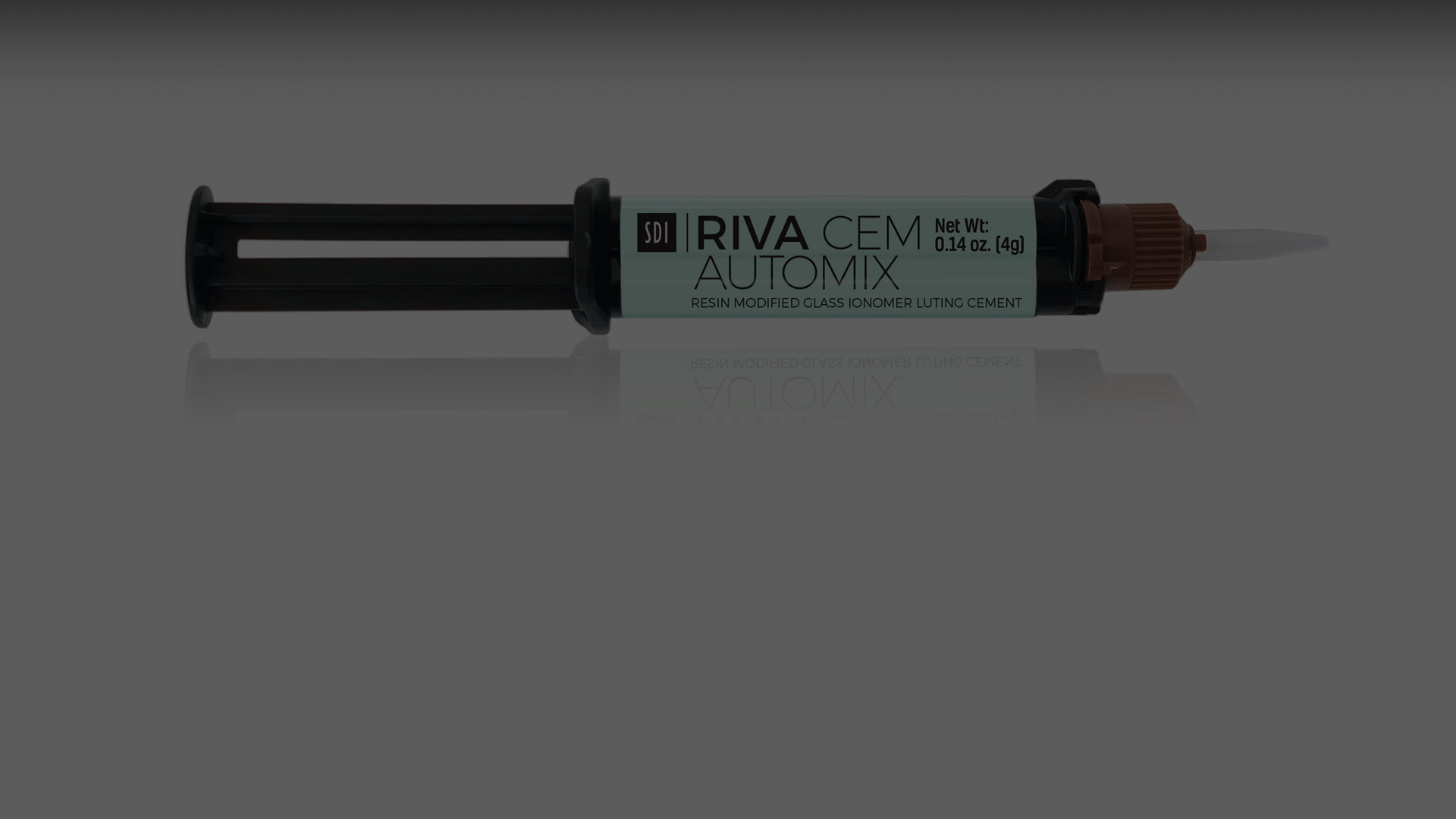
Khadija Awan looks at the restorative advantages offered by the latest dental cements
Once upon a time, choosing and using a dental cement was a relatively straightforward process. However, things have become more complicated in recent years. Dental manufacturers have responded to market forces, and clinicians now face a myriad of combinations of restorative materials, luting cements and clinical situations, making it hard to know which options are best.
Dental cement is used for a variety of dental and orthodontic applications, primarily as a luting agent for bonding prosthetics and orthodontic appliances to teeth.
Other uses include temporary restoration of teeth, cavity lining, and to form an insulating layer under metallic or ceramic restorations to protect the pulp from injury.
They also provide a good marginal seal to prevent marginal leakage, are resistant to dissolution in saliva and other oral fluids and are well tolerated by oral tissues.
Traditional cements consist of separate liquid and powder components which are mixed by hand to form a viscous liquid that sets onto prepared tooth surfaces.
Today’s more advanced cements are available in capsules that are mechanically mixed or come with a paste automix tip attachment that offers far more convenience over traditional hand-mixed cement systems.
Cement types
Most definitive indirect restorations are luted using one of five types of dental cement:
- Zinc phosphate
- Zinc polycarboxylate
- Glass ionomer cement (GIC)
- Resin modified glass ionomer cement (RMGIC)
- Resin cements
Each luting cement has its own advantages and limitations which need to be taken into consideration when selecting one, along with the type of materials used to fabricate the restoration.
Zinc phosphate, zinc polycarboxylate and GIC have long and well-understood clinical histories, and when used correctly and where indicated, each deliver excellent results.
Their main applications are for metal and metal-supported restorations with mechanically retentive properties. However, because of their low strength and low adhesion, they are contraindicated for most ceramic-based and all composite-based restorations.
GIC has a very thin film thickness, is very moisture tolerant, and due to fluoride release, is known to have a remineralising effect on demineralised tooth structure. GIC can be a liner or base for a direct restoration and can also be used as a fissure sealant. For luting and bonding, uses for GIC include cementation of bridges, crowns, inlays, onlays and orthodontic brackets.
RMGIC was developed to address the limitations of conventional glass ionomers with higher compressive and tensile strength, as well as lower solubility to utilise the advantages of resin composite materials. RMGIC is used primarily for the cementation of metallic and porcelain fused to metal (PFM) restorations, including high strength ceramics such as zirconia, and in clinical situations where moisture control is more difficult.
Resin cements
Resin cements have developed from total-etch and self-etch adhesive technologies. The latest self-etching cements require no pre-treatment of the tooth surface, making them easier and faster to work with compared to traditional cement systems.
SDI’s well-established cements, Set and Set PP, are self-etching, self-adhesive resin cements indicated for final cementation of metal, resin, all ceramic and ceramic-based restoratives.
They chemically bond to tooth structure and all types of core material. Set is available in capsules and Set PP in a paste/paste automix syringe system.
Set and Set PP utilise SDI’s proprietary biomimetic formula, a blend of different sized reactive glass particles that harness ion release to cross-link polycarboxylic acid chains. They both release substantially higher fluoride to assist with remineralisation of the natural dentition and do not contain any bisphenol A (including its derivatives) or hydroxyethylmethacrylate (HEMA).
Set and Set PP do not require separate etching and washing. The smear layer remains intact to protect the tooth, significantly reducing any post-operative sensitivity. The large variety of five shades: translucent, A1, A2, OA3 and opaque white, helps maximise aesthetics.
What’s new in luting cement?
SDI Riva Cem Automix is a new resin-modified glass ionomer luting cement indicated for the permanent cementation of metal and ceramic restorations such as zirconia, porcelain and orthodontic bands.
The focused ion release from SDI’s biomimetic glass technology gives Riva Cem Automix clinically higher strength, superior bond and more stable aesthetic properties.
A 2022 study (In vitro properties of different resin-modified glass-ionomer cements, by Alessandro Loguercio and Alessandra Reis – held on file by SDI) showed that Riva Cem Automix has a superior enamel/dentine bond strength combination compared to many other cements.
The same study also confirmed that it has excellent colour stability, ensuring restorations do not deviate from their original shade over time.
Its high flexural strength enhances the longevity of a cement restoration by better withstanding mastication forces while increasing its durability in the oral environment.
This allows Riva Cem Automix to be used for reliable restorations across crown and bridges, posts, inlays and onlays, and orthodontic bands.
Riva Cem Automix has a light tack cure option for the easy removal of excess cement. Simply light tack cure any excess material for five seconds with an LED curing light then gently remove. Alternatively, excess material can be removed after the self-curing phase.

Khadija Awan
Dentist and brand manager at SDI





